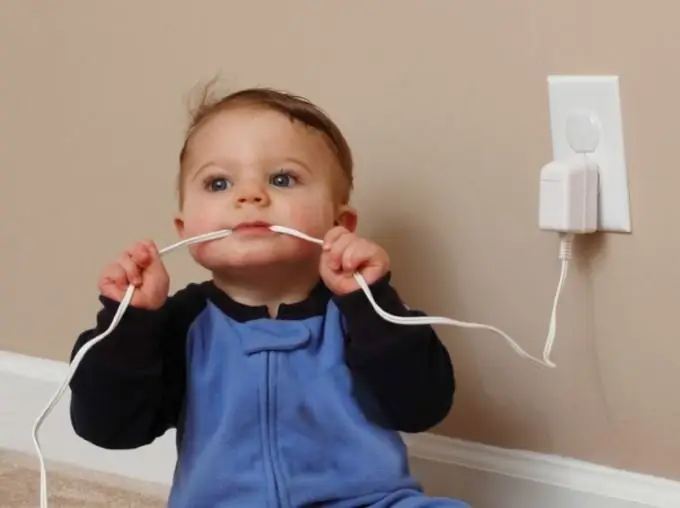- Author Horace Young [email protected].
- Public 2023-12-16 10:35.
- Last modified 2025-01-23 11:41.
So, you are expecting a replenishment in the family. Or is your baby already walking in the crib, and you understand that the hour is not far off when he begins to rapidly expand the framework of the known world? In order to make this world safe for your baby, use a few rules.

Instructions
Step 1
Conduct an audit of items that will be in the child's reach in the near future. Remove any stabbing, cutting, bruising, liquid or sharp corners or items. The most harmless objects at first glance should be tested for strength. Many of them will add to the list of dangerous if taken apart, crushed or brought closer to the respiratory tract. An ordinary plastic bag can cause suffocation, since the baby cannot yet adequately respond to danger, and his chaotic movements rather aggravate the situation. Do not use toys made of thin plastic, as if pressed, it can crack and injure your child.
Step 2
Choose your children's furniture very carefully. A crib will be required for a child up to three years old, so you should not expect that the baby will only sleep in it. It is better to choose a crib weighted with a box (which will allow not only to use the bed space, but also make the bed more stable). The pendulum mechanism must be securely fixed, and the handrails and slats must be very strong.
Step 3
Check the dresser and the rest of the furniture in the room for stability. Be sure to install wall mounts on any furniture that might tip over. Inspect all cupboards, dressers and tables for anti-fallout mechanisms. Check their reliability empirically. If the mechanisms are unreliable or they simply do not exist, be sure to purchase devices against falling out of the boxes. Similarly, it is worth securing boxes in which dangerous items can be stored.
Step 4
Put special protective caps on all sharp corners of furniture. It is better to fix them with screws, since children can easily cope with planted on double-sided tape or glued with weak glue. It is better to replace sharp handles on cabinets and tables for a while with smoother, as soft as possible.
Step 5
Secure your windows with special fasteners as early as possible - even a child who still cannot walk is likely to get to the window. You can buy fasteners at any children's or building supermarket. Even if it is impossible to find them, consult the help of online stores. Remember that a mosquito net is not protection - most tragedies come from the belief that it will keep a child from falling. Become familiar with the fastening mechanism, remember that not all of them are equally reliable. Some protect only when the window is open, but leave the child the opportunity to open it himself.
Step 6
Use soft rugs on slippery floors, especially in the play area and bedside area.
Step 7
Install special horseshoes on the doors, which should be open to avoid pinching / breaking the baby's fingers. It is better to install special children's gates in areas where the child should not be allowed (for example, stairs).
Step 8
Purchase and install blockers on outlets. Keep the keys out of the reach of your child.
Step 9
Get a radio or video nanny if you leave your child alone in the room.
Step 10
Install a special screen on the gas / electric stove.
Step 11
Whenever possible, try to purchase household appliances with special child locks.
Step 12
Remember that all attachments must be installed out of the reach of the child.






